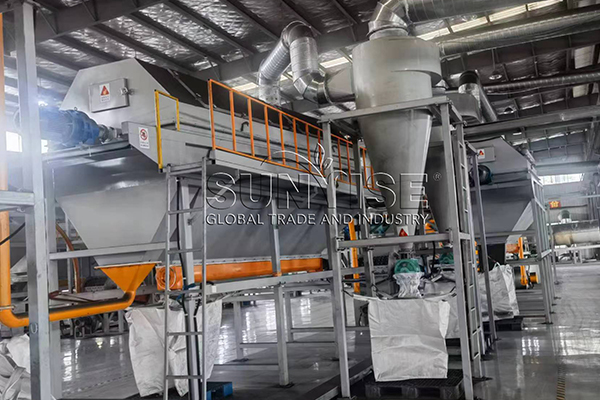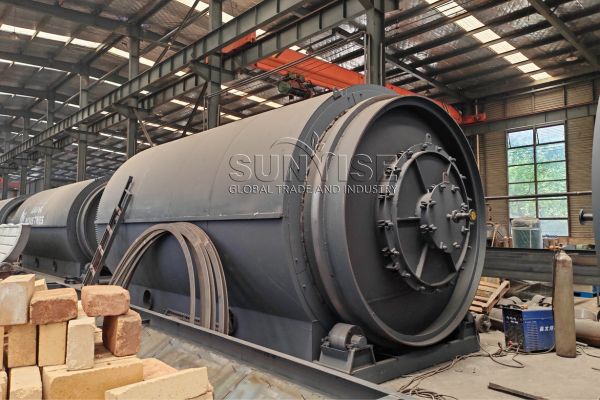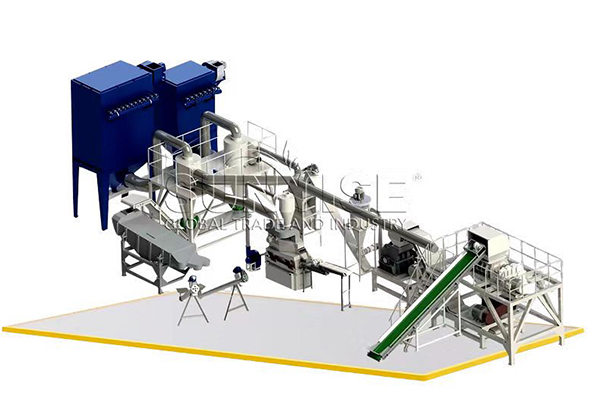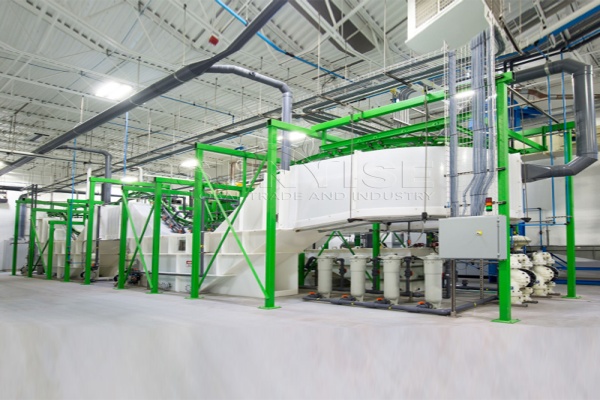Immer mehr Reifenrecycler verarbeiten Abfallreifen hinein verkaufte Materialien Und Verkauf ihnen. Es gibt bereits professionell Abfall -Reifenrecyclinglinien auf dem Markt. Abfallreifen -Recyclingsysteme variieren je nach Kapazität im Design. Dies wirkt sich auf die Auslastung der Region aus, kosten, Arbeit, usw. Before purchasing a tire recycling line, we’d love to help you confirm your output. How about a processing capacity of 200 kg/h? An 7 Oktober 2023, a customer from Singapore inquired us.
Here are the details of our communication on this case.
Yushunxin: If you want to process 200kg of waste tires per hour, we can recommend you to choose our waste tire refining production line. It is an option for operating a small tire recycling production line.
There are two reasons: Erste, Produktproduktionsleitungen für kleine Abfallreifen haben normalerweise a Niedrigere anfängliche Investitionskosten, während Sie das Öl in den Reifen bei einer höheren Ölausbeute wiederherstellen können. Es kann den Produktionsbedarf erfüllen, ohne überschüssige Geräte oder Ressourcenverschwendung zu verursachen.
Auf der anderen Seite, Kleine Geräte sind normalerweise mehr so konzipiert, dass sie mehr sind kompakt und einfach, mehr flexibel zu bedienen, und hat normalerweise niedrigere Wartungskosten, Dies ist für begrenzte Raum- oder Start-up-Unternehmen geeignet.
Wie zu Design 200KG/H -Reifenpyrolyse -Produktionslinie
Es besteht normalerweise aus einem Reifen Shredding -Maschine, A Pyrolysereaktor, A Oberflächenkondensator zum Abkühlen und Verbrauch der Pyrolysegase, um flüssige Produkte zu erhalten (wie Pyrolyseöl), A Gasreinigung und Sammelsystem, und a Rückstandshandhabungssystem für den soliden Rückstand (wie Carbonschwarz) nach der Pyrolyse links. Kontaktieren Sie uns jederzeit, we’ll customize the pyrolysis solution for you.
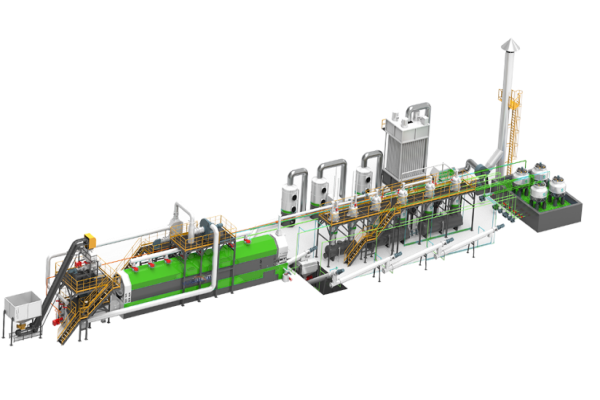
Was ist das Design Einer 200 kg/h -Reifenpyrolyseproduktionslinie
Es besteht normalerweise aus einem Reifen Shredding -Maschine, A Pyrolysereaktor, A Oberflächenkondensator zum Abkühlen und Verbrauch der Pyrolysegase, um flüssige Produkte zu erhalten (wie Pyrolyseöl), A Gasreinigung und Sammelsystem, und a Rückstandshandhabungssystem für den soliden Rückstand (wie Carbonschwarz) nach der Pyrolyse links. Kontaktieren Sie uns jederzeit, we’ll customize the pyrolysis solution for you.
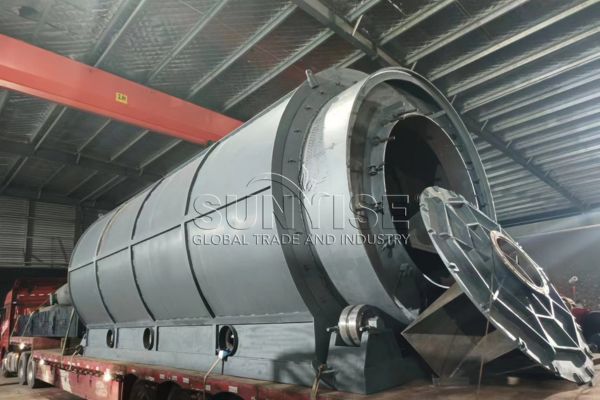
Der Gebietsanforderung von 200 kg/h Reifenpyrolyse -Produktionsliniensystem
Der Gebietsanforderung von 200 kg/h Reifenpyrolyse -Produktionsliniensystem
After knowing about the design, the customer in Singapore noticed the space requirements of the tire pyrolysis recycling line. He wanted to know if the workshop could accommodate a 200kg/h Reifenpyrolyseproduktionslinie?
Generally speaking, a 200kg/h tire pyrolysis production line includes equipment, operating space, material storage and transportation channels, usw., and usually requires a workshop area of more than 500M2. Here is a detailed layout plan:
Wie viel kostet eine 200 kg/H -Reifenpyrolyseproduktionslinie Kosten
Allgemein, the cost of a 200 kg/h tire pyrolysis recycling production line can vary depending on various factors such as the quality of components, additional features, and brand.
Jedoch, you can expect to invest around $14,000 Zu $21,000. The exact cost would be determined after considering the specific requirements of the production line, such as the type of reactor, heating system, and cooling system used.
It’s important to note that these are just rough estimates and the actual cost would need to be calculated based on a detailed assessment of the equipment, installation, and any other associated costs such as transportation, installation labor, and after – sales service.
Wie viel kostet eine 200 kg/H -Reifenpyrolyseproduktionslinie Kosten
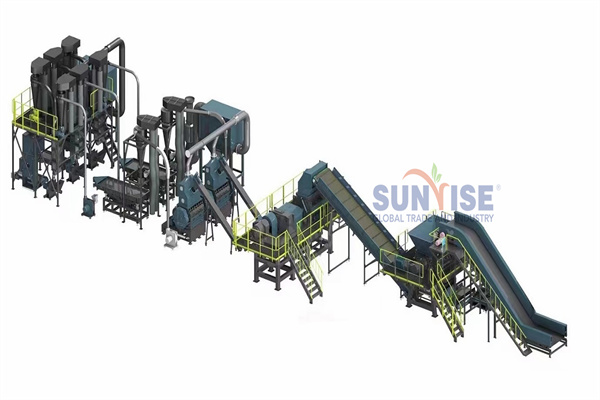
Allgemein, the cost of a 200 kg/h tire pyrolysis production line can vary depending on various factors such as the quality of components, additional features, and brand. Jedoch, you can expect to invest around $14,000 Zu $21,000. The exact cost would be determined after considering the specific requirements of the production line, such as the type of reactor, heating system, and cooling system used.
It’s important to note that these are just rough estimates and the actual cost would need to be calculated based on a detailed assessment of the equipment, installation, and any other associated costs such as transportation, installation labor, and after – sales service.
Jedoch, you can also tell us what you want to recycle from the tires? Pyrolyseöl or carbon black? You can determine the solution in this way.
Wenn Ihr Ziel ist, zu erhalten Pyrolyseöl von einer Reifenpyrolyseeinrichtung, die bei der Arbeit von 200 kg/h
| Equipment Name | Extractable Product | Unit Price (Approximate) |
|---|---|---|
| Tire Shredding Machine | Prepares shredded tires for pyrolysis | $2,000 – $20,000 |
| Pyrolysereaktor | Initiates the pyrolysis process to produce pyrolysis gas | $40,000 – $200,000 |
| Condenser | Condenses pyrolysis gas into liquid oil | $5,000 – $20,000 |
| Oil – Gas Separator | Separates the condensed oil from uncondensed gas | $10,000 – $30,000 |
| Oil Storage Tank | Stores the extracted pyrolysis oil | $3,000 – $8,000 |
| **Total** | – | $145,000 |
Wenn Sie Carbonschwarz von a wiederherstellen möchten 200 Kg/H -Reifenpyrolyselinie
| Equipment Name | Extractable Product | Unit Price (Approximate) |
|---|---|---|
| Tire Shredding Machine | Prepares shredded tires for pyrolysis | $2,000 – $20,000 |
| Pyrolysereaktor | Initiates the pyrolysis process to produce carbon black and other by-products | $40,000 – $200,000 |
| Carbon Black Separator | Separates carbon black from other solid residues | $10,000 – $20,000 |
| Carbon Black Storage Tank | Stores the extracted carbon black | $2,000 – $5,000 |
| **Total** | – | $128,000 |
Wenn Ihr Ziel ist, zu erhalten Pyrolyseöl von einer Reifenpyrolyseeinrichtung, die bei der Arbeit von 200 kg/hWenn Ihr Ziel ist, zu erhalten Pyrolyseöl von einer Reifenpyrolyseeinrichtung, die bei der Arbeit von 200 kg/h
| Equipment Name | Extractable Product | Unit Price (Approximate) |
|---|---|---|
| Tire Shredding Machine | Prepares shredded tires for pyrolysis | $2,000 – $20,000 |
| Pyrolysereaktor | Initiates the pyrolysis process to produce pyrolysis gas | $40,000 – $200,000 |
| Condenser | Condenses pyrolysis gas into liquid oil | $5,000 – $20,000 |
| Oil – Gas Separator | Separates the condensed oil from uncondensed gas | $10,000 – $30,000 |
| Oil Storage Tank | Stores the extracted pyrolysis oil | $3,000 – $8,000 |
| **Total** | – | $145,000 |
Wenn Sie Carbonschwarz von a wiederherstellen möchten 200 Kg/H -ReifenpyrolyselinieWenn Sie Carbonschwarz von a wiederherstellen möchten 200 Kg/H -Reifenpyrolyselinie
| Equipment Name | Extractable Product | Unit Price (Approximate) |
|---|---|---|
| Tire Shredding Machine | Prepares shredded tires for pyrolysis | $2,000 – $20,000 |
| Pyrolysereaktor | Initiates the pyrolysis process to produce carbon black and other by-products | $40,000 – $200,000 |
| Carbon Black Separator | Separates carbon black from other solid residues | $10,000 – $20,000 |
| Carbon Black Storage Tank | Stores the extracted carbon black | $2,000 – $5,000 |
| **Total** | – | $128,000 |
The above is the specific content of our communication with the Singapore customer. In addition to the proposal of waste tire pyrolysis production line, Wir können Ihnen auch Geschäftspläne zur Verfügung stellen Leiterplattenrecycling, Solarpanel Recycling Und lithium battery recycling line. Wenn Sie es brauchen, Bitte kontaktieren Sie uns jederzeit.
Kontaktieren Sie uns

